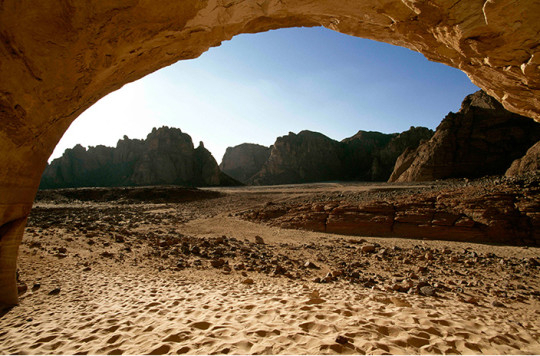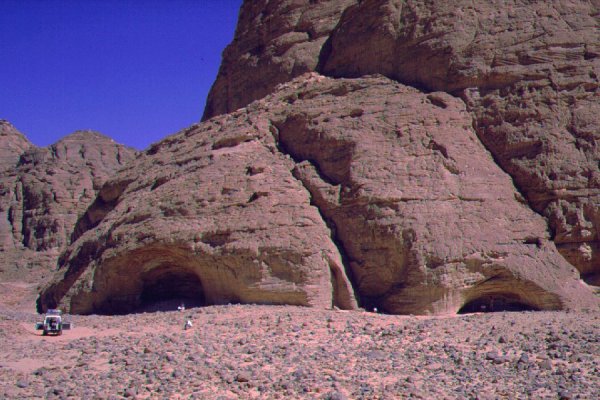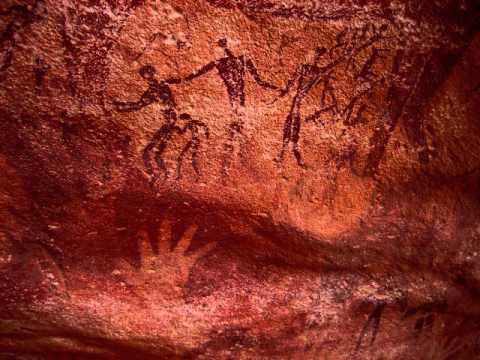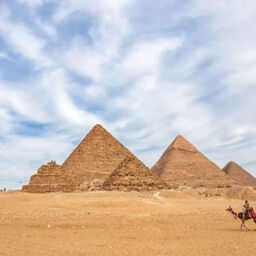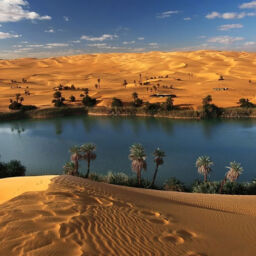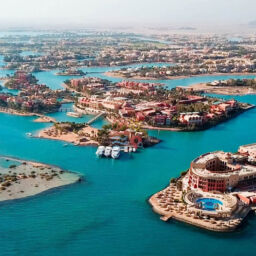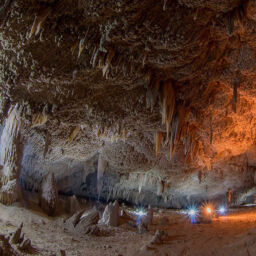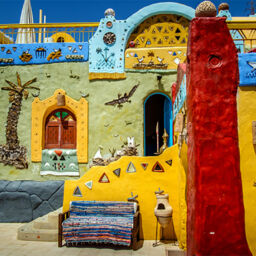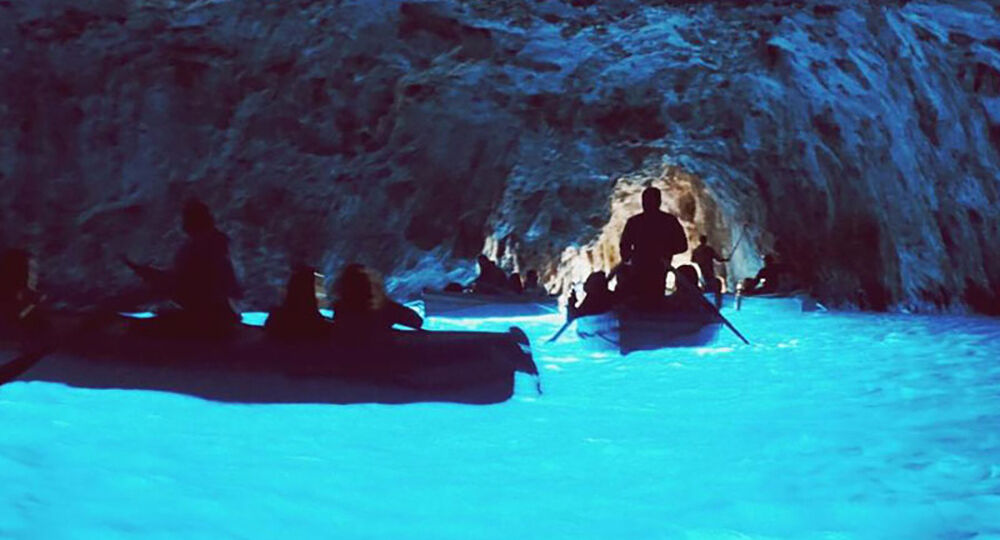
A cave with ancient rock art in the mountainous Gilf Kebir plateau of the Libyan Desert section of the Sahara. It is located in the New Valley Governorate of southwest Egypt, near the border with Libya.
The cave and rock art were discovered in October 1933 by the Hungarian explorer László Almásy. It contains Neolithic pictographs (rock painting images) and is named due to the depictions of people with their limbs bent as if they were swimming. The drawings include those of giraffe and hippopotamus. They are estimated to have been created as early as 10,000 years ago with the beginning of the African Humid Period, when the Sahara was significantly greener and wetter than it is today.

New rock art discoveries in this area have been made in recent years and add to the debate, which has continued, as have expeditions by academics, tourists and others. These visitors have sometimes left their own marks on the rock faces in the form of graffiti, and in the surrounding sand, where the tracks from previous parties (including Almásy’s) lie undisturbed, adding to the sense of history: not only of those who produced the paintings, but also of the site itself. Meanwhile the condition of the paintings, prone to flaking, continues to deteriorate, further obscuring this tantalising glimpse into the past.
